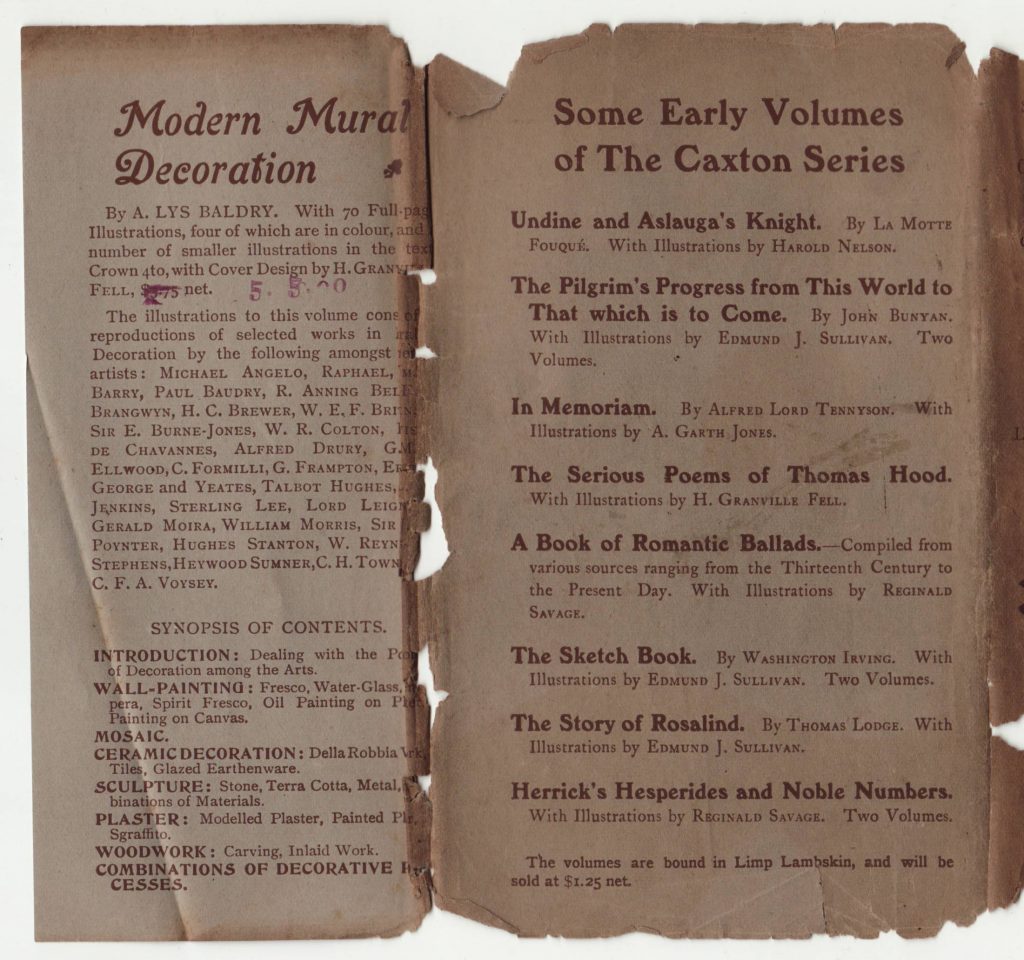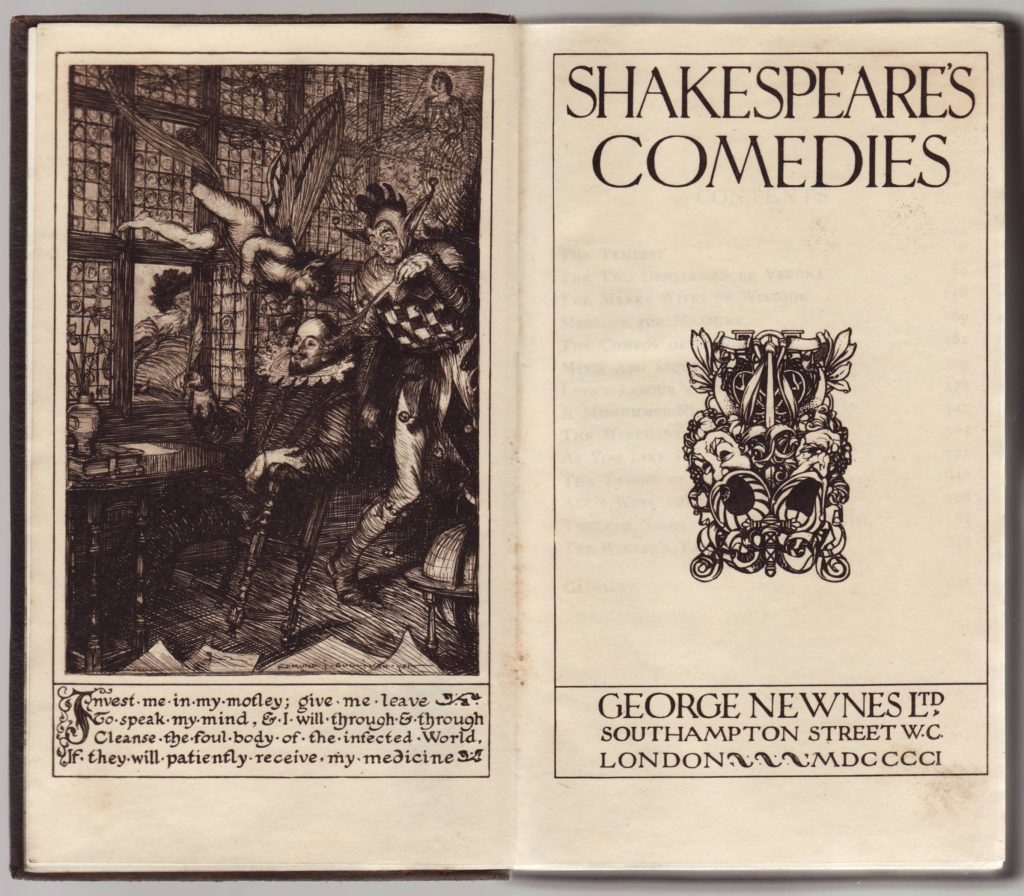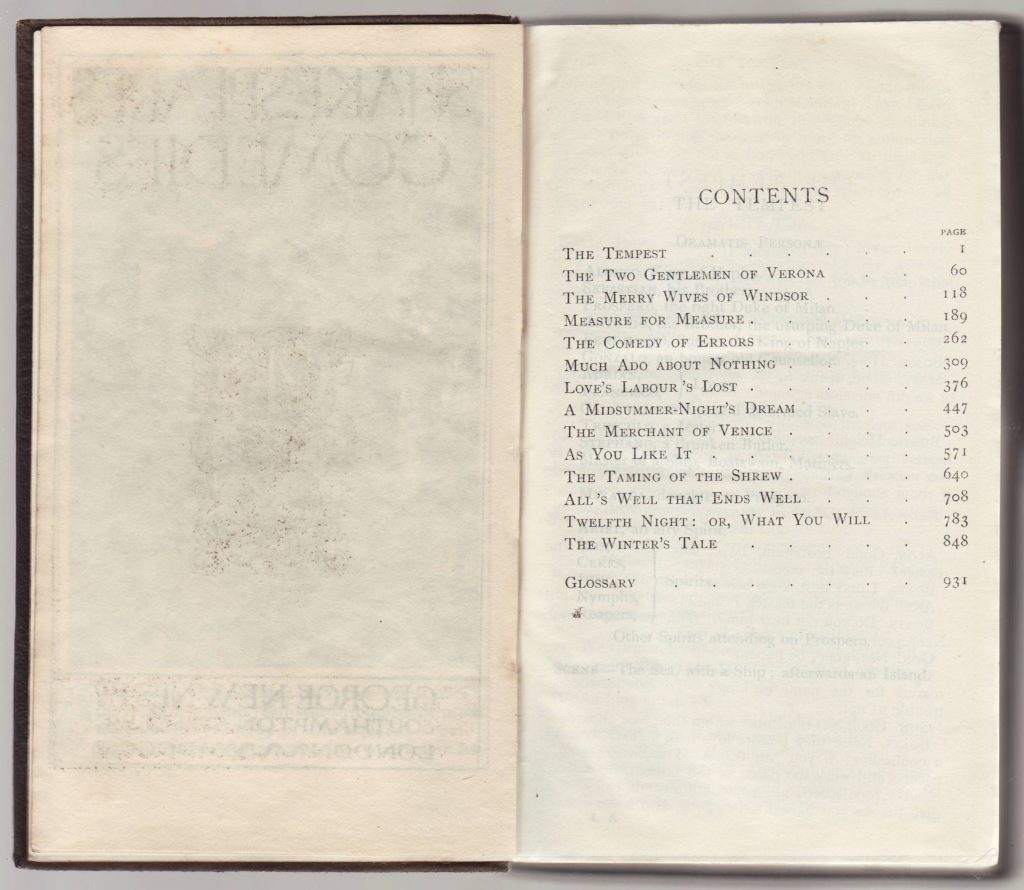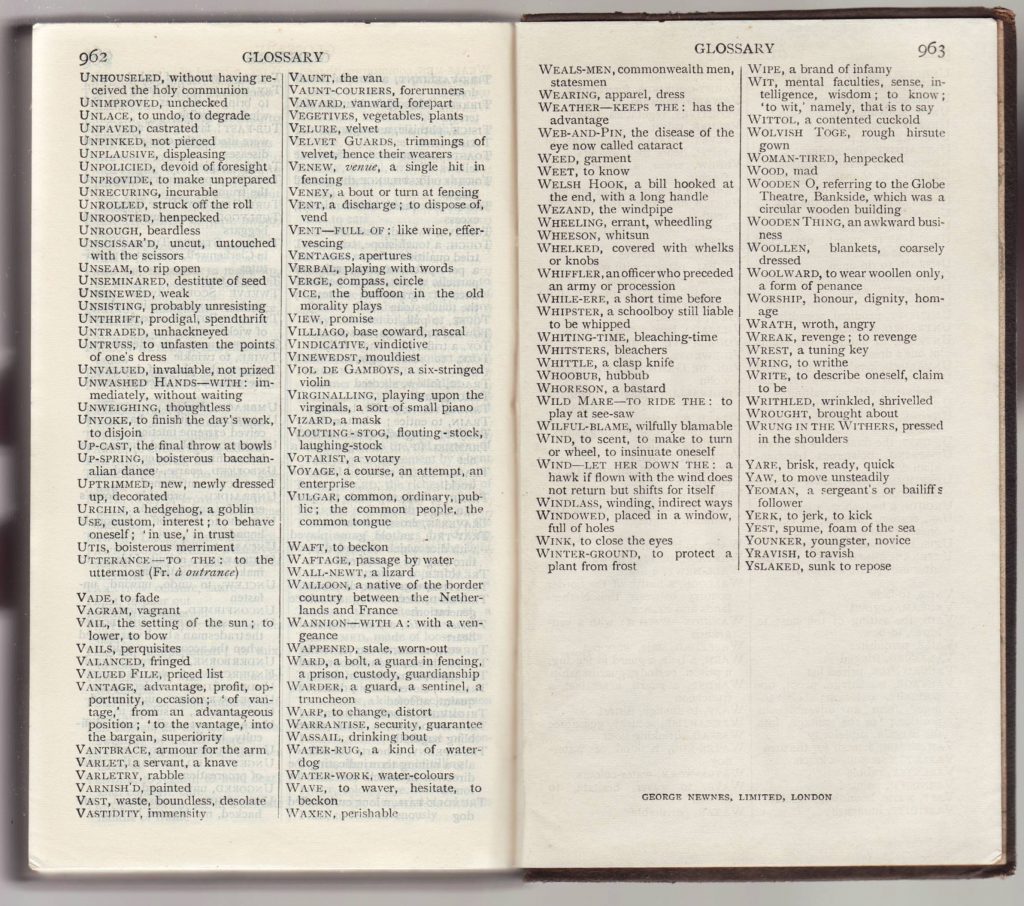Charles Scribner’s Sons (New York, US)
Series dates: 1901-1937
Size: 4″ x 6.75″
George Newnes Ltd. (London, UK)
Series dates: 1901-1907
Size: 4″ x 6.75″
Scribner’s Caxton Series consisted of rejacketed copies of George Newnes’ Ltd. Thin Paper Classics series (which were not advertised as illustrated, except for a frontispiece) and possibly copies of Newnes’ Caxton Series (similar in design and size to the Thin Paper Classics, but with illustrations and heavier paper). There seems to be significant confusion with these series names. See the entry on Thin Paper Classics for more information in this issue.
“George Newnes described his publishing enterprise as one that was ‘content to plod on year after year, giving wholesome and harmless entertainment to crowds of hard-working people, craving for a little fun and amusement. It is quite humble and unpretentious.'” (Dictionary of Literary Biography, British Literary Publishing Houses, 1881-1965. Vol. 112, 1991). Newnes was a successful publisher of popular literature, including the Strand Magazine and Tit-Bits and other popular periodicals. Famous authors such as Conan Doyle, H.G. Wells, and P.G. Wodehouse were published in Newnes periodicals and later published popular collections with the firm. Newnes also published books, many practical and how-to books, popular classics and contemporary throw-away literature.
Scribner’s also had numerous literary periodicals in the first half century after it was established in 1846. It evolved into one of the most prestigious of imprints in the early 20th century with several reprint series including the Mermaid Series and the Modern Student’s Library.

Newnes first published their Thin Paper Classics in 1901. That series name was used by numerous other publishers both before and after that date. The Thin Paper Classics were not typical of most of Newnes other literary efforts: they were a reprint series both stylish in design and substantive in content. Copies of the Thin Paper Classics, printed in the UK and with the Newnes imprint, were imported to the US where they were jacketed and sold as the Caxton Classics, and sometimes the Caxton Thin Paper Classics.
Newnes also marketed a Caxton Series in the UK, which was similar to the Thin Paper Classics but included illustrations and heavier paper. They also offered Newnes’ Pocket Classics (from about 1903-1906) which was offered as a “companion” to the Thin Paper Classics.

Newnes seems to have ceased publishing the Thin Paper Classics and Caxton series around 1907. Simpson, Marshall, Hamilton, Kent & Co. began publishing what seems to have been the same series (using the same name) in the UK around 1924. Scribner’s also sold some of these titles in the US with the Thin Paper Classics series name. I believe that none of these series were sold by Scribner in the time span between the Newnes and Simpson et al. series (eg., between 1907 and 1924). To confuse things even more, Scribner sold copies of the same Simpson (et al.) series under the Caxton Series name.

A 1903 advertisement from Scribner’s for the series is below. Although the books are dated as early as 1901, it is possible that Scribner’s did not start importing and selling the books (which sometimes retained their 1901 imprint date) until 1903. The advertisement suggests the books are illustrated, but the Shakespeare title (below) is not: this suggests that Scribner’s was importing both Newnes Thin Paper Classics (not illustrated) and Caxton Series (illustrated) and jacketing and selling them as Scribner’s Caxton Classics.

A 1905 entry in Scribner’s The Book Buyer advertises new titles in the series:

Details of some of the new titles are also included in this (1905) issue of The Book Buyer:

By 1911 the series is referred to as both Caxton Series and Caxton Classics, again in The Book Buyer:
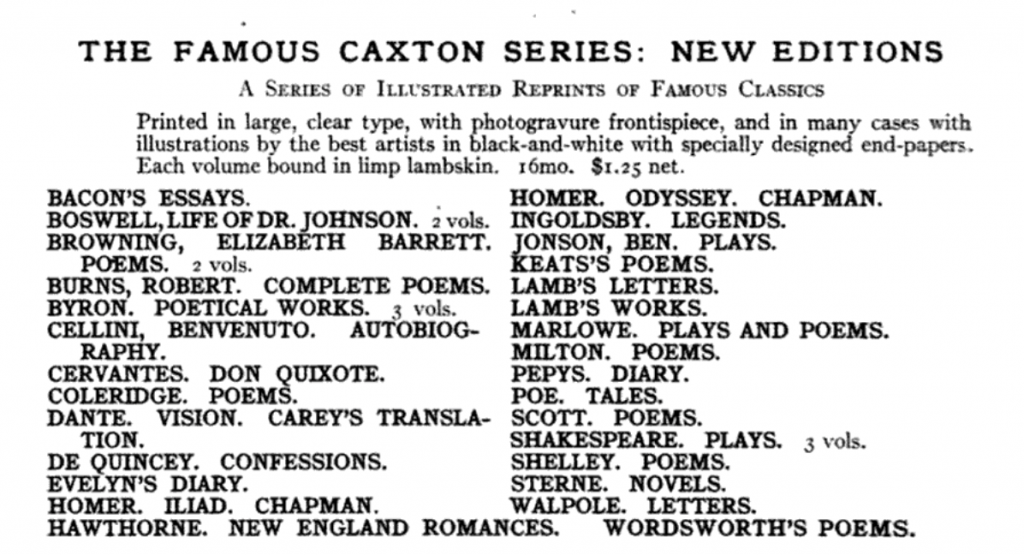
By 1938 this series, possibly modified, is advertised under the name Illustrated Classics, or Caxton Illustrated Classics or Caxton Series. The series is not advertised after the late 1930s.
The copy of Shakespeare’s Comedies below is dated 1901 and was probably among the first of Scribner’s Caxton Series sold in the U.S. The spine indicates “limp leather” and the price of $3.75 which was for the set of three Shakespeare titles (Comedies, Histories & Poems, Tragedies) which were also available individually for $1.25. The series name was on the bottom front of the jacket, which is devoid of illustrations and common to the series. The front jacket flap advertises the Thin Paper Editions, Newnes’ non-illustrated series, of which this copy (sold as Scribner’s Caxton Series) is an example.
The rear of the jacket advertises the illustrated Caxton Series, referring to Newnes’ Caxton Series, and also part of Scribner’s Caxton Series.
Inexplicably advertised on the back jacket flap is another Scribner’s import from Newnes, Baldry’s Modern Mural Decoration, first published in 1902. The price on the jacket ($3.75) is inked out and replaced by a $5.00 price. This title was one of the “imported titles” being sold by Scribner’s in the US.
The “limp lambskin leatherette” bindings are imprinted with substantive gold art nouveau decorations. Newnes imprint is on the book spine and Shakespeare’s name on the front cover.
The endpapers are decorated and include the initials A.G.J.
The half title page includes a quote from Jonson.
The only illustration in the book faces the title page. The illustration is by Edmund J. Sullivan, as indicated on the front jacket flap. The date, MDCCCCI, or 1901, is included with the imprint.
There is no copyright indication.
Following the glossary at the end of the book is an indication that the book was printed by George Newnes, Limited, London.

